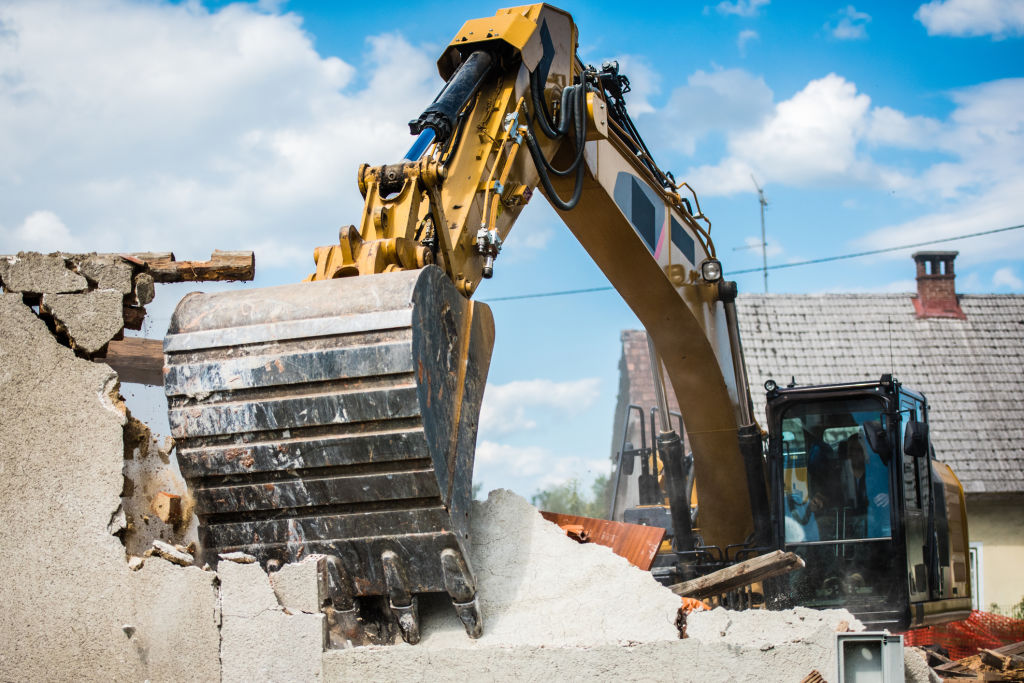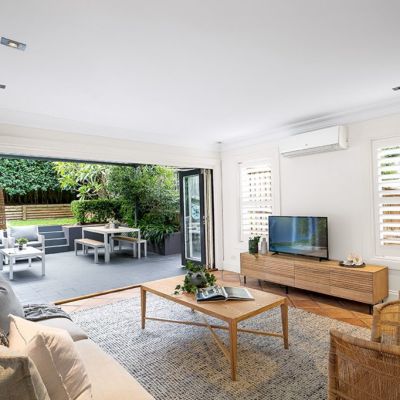Five problems that will play havoc with your knock-down rebuild plans

If you’re keen to replace a tired old home with a modern masterpiece but forget to do your due diligence before buying a property or signing a contract with a builder, you may find yourself stuck with a lemon.
Metricon Homes Queensland general manager Peter Ryan estimates more than 80 per cent of the company’s knockdown rebuild clients are ignorant of at least one part of the process.
This quick checklist will help you avoid being caught short.
- Read more: The ultimate guide to building a new home
1. Heritage protections
Whether you already own the house you plan to knock down or you’re yet to make a purchase, Ryan says the very first thing you need to be across is whether or not a property is heritage-protected.
“People are often not aware of character or heritage controls,” he says.
There are heritage registers in each state and most councils will identify heritage-listed properties on their Local Environmental Plan. In some instances, whole streetscapes fall under protection, in other cases you may only need to retain a heritage facade, a front fence or even a particular tree.
For unlisted homes, you may still need a demolition permit which can take a few weeks depending on your council requirements.
2. Council rules and regulations
Development control plans vary widely from state to state and from council to council, so your most important homework is to find out what’s allowed in your suburb, your street and on your particular block.
Many buyers assume they can rebuild a house to the same footprint, height and bulk as the pre-existing home, or the neighbouring homes, but this is not always the case.
“Rules around set-backs and height limits change,” says HIA chief executive industry policy Kristin Brookfield. “The house you’re knocking down may not be allowed to be built today.”
Typical amendments might include increased boundary setbacks and new regulations around carports and garages.
Flood-prone areas may require a home to be built on bearers and joists rather than a slab on-ground, while bushfire zones will come with a set of council requirements that generally increase the cost of your build.
Councils have controls on floor space ratios, dwelling heights, setbacks from the street and landscaping. Your new home may need to replicate the character of the area or be in keeping with an estate’s design guidelines.
The good news is that most of this research can be done online and can be further clarified in person without cost at your local council.
“Just get online and look up the council code for new houses in your area,” says Brookfield. “NSW and Victoria both have some very clever online databases where you can put a property address in and get some useful information about restrictions on property.”
3. Finance woes
Intuitive Finance managing director Andrew Mirams says home owners should begin with the end in mind.
“You need to make sure from the outset, before you even purchase a property, that you’ve got ample equity or cash resources to finish the project,” he says. “A lot of people forget about things like planning, hiring a project manager to run your build, acquisition costs, holding costs.”
Mirams says care also needs to be taken to evaluate where you are in the property cycle to avoid a shortfall in valuation.
In a steady or declining market, lenders may not see eye to eye with home owners on the end value of their new build, and may apply a discount of up to 20 per cent of your anticipated value.
“I’ve got a couple of clients who bought at the high point of the market and they will need to wait to see value,” Mirams says. “Valuers are doing harsh valuations but it doesn’t mean your project isn’t viable.”
Mirams says buying a property that is in good enough condition to live in or rent out can be a useful strategy if you have to wait out a lacklustre market to secure funding.
- Read more: How construction loans work
4. Unhappy neighbours
Overshadowing, visual bulk, retaining walls, tree removal, boundary fencing, obstruction of views, traffic and parking implications – these are some of the more common complaints councils receive from neighbours when assessing a development application for a new residential build.
While many concerns can be alleviated through timely communication, some may escalate and cause planning or building delays.
“Neighbours can equal time and time equals dollars,” says Brookfield. “If you’ve knocked your house down and you’re renting elsewhere while you’re waiting for your new house, time is money. A neighbour’s objection could push your wait for council approval from three months to six months or even 12 months.”
5. Budget blowout
Very few home owners correctly calculate the total cost of a knock-down rebuild. Apart from the obvious up-front expenses of a block of land and a builder to build your new home, there are multiple expenses that will pile up. These include from the rent and mortgage repayments you’ll need to cover while the build is underway, as well as finished touches like landscaping.
Ryan says you’ll need to have a contingency fund for unknowns like removing asbestos, providing temporary power poles and traffic control, and for items that aren’t included in standard build contracts like window furnishings, light fittings and driveways.
A good rule of thumb is to have access to additional funds representing at least 10 per cent of the build cost to put towards hidden or unexpected costs.
- Read more: How much it costs to build a brand new home
We recommend
States
Capital Cities
Capital Cities - Rentals
Popular Areas
Allhomes
More










